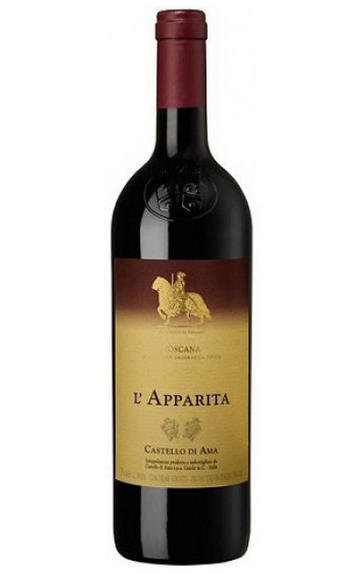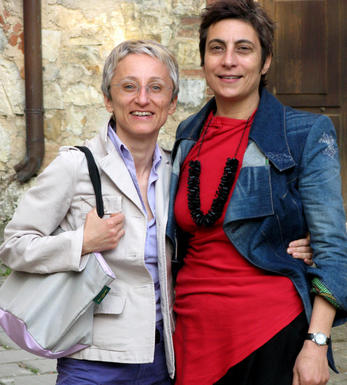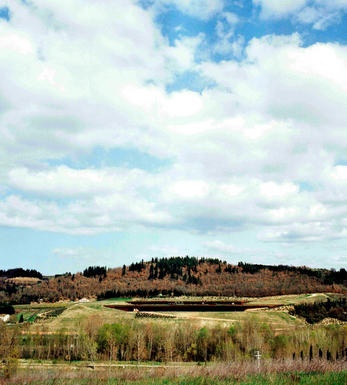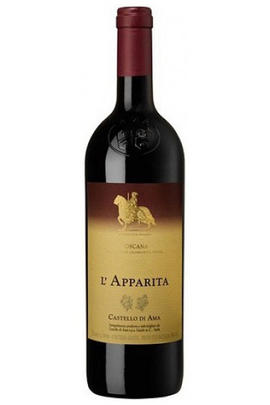
Critics reviews
Antonio Galloni - Wine Advocate - Issue#177 Jun 2008
About this WINE

Castello di Ama
Castello di Ama is one of Tuscany's pre-eminent estates, responsible for wines of great finesse and filigree. Located close to Gaiole-in-Chianti at approx. 480 metres above sea level, the sixteenth century, 250 ha (90ha of vines) property is blessed with fine galestro and alberese stone soils and superior terroir.
It has been owned by Lorenza Sebasti Pallanti's family since 1972. Her husband Marco Pallanti joining in 1982, coinciding with a period of renewed investment, notably that of increasing plant density to 5000/hectare, the introduction of some French varietals such as Merlot, and in 1992, the switch from ageing in large slavonian botti to French barriques.
The core Castello di Ama range consists of a Chianti Classico, a blend of 80% Sangiovese 12% Canaiolo, 8% Malvasia Nera and Merlot from 30-44 year old vines, aged for 12 mths in 20% new French oak;
Chianti Classico Vigneto La Casuccia is a single-vineyard blend of 80% Sangiovese 20% Merlot from an average 35 year old vines aged in 50% new French oak;
Chianti Classico Vigneto Bellavista is a single-vineyard wine from clay-rich soils blending 80% Sangiovese 20% Malvasia Nera aged for 12 months in 50% new French oak and made only in exceptional years;
L'Apparita is a mercurial, 100% Merlot from average 35 year-old vines aged for 12 months in 50% new French oak.

Chianti Classico
Chianti Classico is a leading Tuscan DOCG zone which covers approximately 7,000 hectares between Florence and Siena. Its vineyards stretch into the Apennine foothills at altitudes of between 150m and 500m, and encompass two distinct terroirs and styles. The sandy, alluvial soils of the lower sites yield fuller, meatier wines while the limestone and galestro rocks of the higher vineyards deliver finer, more ethereal examples.
The origins of Chianti date back to the Middle Ages, although Chianti Classico was really born in 1716 when Grand Duke Cosimo III of Tuscany classified the zone, identifying the villages of Radda, Greve, Panzano, Gaiole and Castellina as the leading sites; these same villages still represent the nucleus of the Chianti Classico DOCG today. The regulations have been revised, however, to insist that the wine is made from a minimum 80 percent Sangiovese and a maximum 20 percent Canaiolo and ameliorative grapes (ie Merlot and Cabernet Sauvignon); from the 2006 vintage, no white grapes are allowed.
Chianti Classico cannot be released until 1st October in the year following the harvest, while Chianti Classico Riserva must undergo 24 months of ageing before release, including at least three months in bottle. At the region’s top addresses, French barriques are gradually being adopted in the place of the traditional, larger slavonian botte.
Recommended Producers: Monte Bernardi, Tenuta Fontodi, Castelo di Ama, Bibbiano

Merlot
The most widely planted grape in Bordeaux and a grape that has been on a relentless expansion drive throughout the world in the last decade. Merlot is adaptable to most soils and is relatively simple to cultivate. It is a vigorous naturally high yielding grape that requires savage pruning - over-cropped Merlot-based wines are dilute and bland. It is also vital to pick at optimum ripeness as Merlot can quickly lose its varietal characteristics if harvested overripe.
In St.Emilion and Pomerol it withstands the moist clay rich soils far better than Cabernet grapes, and at it best produces opulently rich, plummy clarets with succulent fruitcake-like nuances. Le Pin, Pétrus and Clinet are examples of hedonistically rich Merlot wines at their very best. It also plays a key supporting role in filling out the middle palate of the Cabernet-dominated wines of the Médoc and Graves.
Merlot is now grown in virtually all wine growing countries and is particularly successful in California, Chile and Northern Italy.



Buying options
Add to wishlist
Description
A very impressive Super Tuscan wine from this great Chianti Classico Estate. Still quite closed on the nose, but hints of dark fruit and oak suggest what is to follow. On the Palate it is huge and dense with the black fruit hinted at on the nose taking the lead. Suggestions of chocolate and mineral add to the mix, all wrapped up in silky tannins, with a touch of toasty oak on the finish.
Chris Pollington - Fine Wine Specialist
wine at a glance
Delivery and quality guarantee